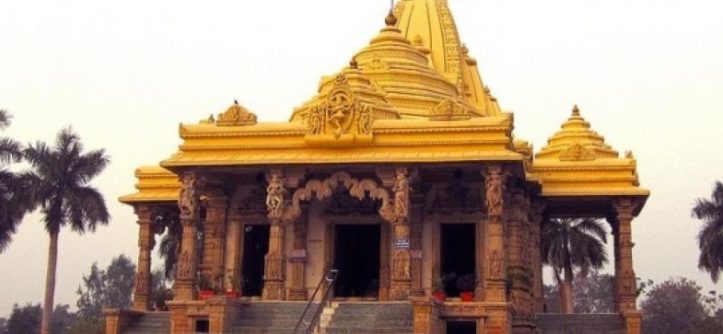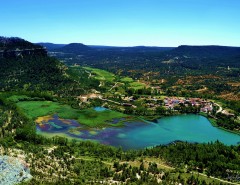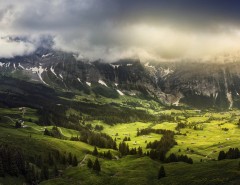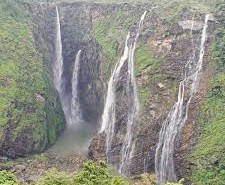Kayavarohan is a village in the Vadodara district of the state of Gujarat, India. Kayavarohan is popularly known as Karvan and is situated on the National Highway 8 at a distance of 30 km from Vadodara. Kayavarohan is the birthplace of Lakulish, the 2nd Century C.E. Shaivite revivalist, reformer and propounder of the pashupata doctrine. It is an important religious place on account of its Shiva temple in Lakulish avatar.
History
Kayavarohan (Karvan) is an ancient town believed to have existed through each of the Four Ages. As per Shaivite mythology, Lord Shiva in the Lakulish manifestation appeared at this place. According to mythology and puranas, from here Lord Shiva transmigrated into the form of a Brahmin child. Thus the place came to be known as Kayavarohan [Kaya (Body) + Avarohan (Descent) = Where the body of the Lord has descended]. It is an ancient town believed to have existed through each of the Four Ages according to the Hindus. According to a popularly held belief it was from here that Lord Shiva in the guise of a child transmigrated after death and his body disappeared. Thus the place came to be known as Kayavarohan. A number of copper coins and a stone quern have been found from here. A beautiful head of Tapas, the image of Kartikeya and an idol of Uma Maheshwara are some of the archaeological specimen discovered from here. Kayavarohan is also famous for its healthy environment
In kayavarohan there is Swaminarayan temple which is built by Haricharandasji Swami in V.S. 1971 which is part of the Vadtal Gadi. This temple is located by Kayavarohan Tower near Gam panchayat.
Religious Significance
The Kayavarohan temple
Kayavarohan is one of the sixty-eight ‘teerthas’ (Pilgrimage) of Lord Shiva as mentioned in the Shiva Purana. However, Kayavarohan is not among the 12 Jyotirlingas as mentioned in the Shiva Purana.
It is of great significance to the Pasupatas (Followers of the Pashupati), those in the spiritual following of Lakulish, for it is considered to be the place of Shiva’s appearance on earth in that incarnation. Lakulish is considered to be the 28th birth of Shiva. Shiva had come to the earth in the form of Lakulisha through Kayavarohan, literally meaning ‘Descent of the form’.
Kayavarohan harbours the Brahmeshwar Jyotirshivlang temple, claimed to have been founded by Maharshi Vishwamitra. It has been held that the incarnation of Shiva in Lakulish has merged with the linga in Shambavi Mudra.
The Kayavarohan lingam represents the “formless” but a unique, exceptional iconic form of Shiva bearing the image of a meditating yogi, who holds parchments in one hand and citron (Matulinga) in the other.
It is believed that Ichhapuri was the main place of pilgrimage in Satyuga, Mayapuri in Treta Yuga, Meghavati in Dwapar Yuga, and Kayavarohan in the present Kali yuga. This temple has a Lingam of Lord Shiva, made up of black stone. It is believed that Maharshi Vishwamitra had installed this Linga of Lord Shiva during the Ramayana period.
In the Vedic times, Kayavarohan/Karvan was a popular centre of learning and education and used to house numerous Vedic Universities, Yajna Shalas and the temples of many Hindu Gods.
The myth has it that during the barbarian invasion of Mahmood of Ghazni, the luminous jyotirlinga with Lakulish merged the light of all of the other 12 jyotirlingas into its form and disappeared. Maha Shivratri is most famous festival in Kayavarohan. During the sacred day, hundreds of men wear Lord Mahadev’s attire and appear at the temples.
Presently, there is an underground meditation cave at the Kayavarohana temple used for seclusion and meditation.
Archaeological Significance
The village and its surrounding areas are of great archaeological significance. Ancient sculptures and relics belonging to the 2nd century have been excavated from this place.
Later during the Dark Ages of Hinduism (Muslim invasions and subsequent reign from 11th century CE. to 17th century CE), starting with the attacks of barbarian Muslim marauder Mahmud Ghazni, who looted and destroyed the temple of Somnath in Gujarat, all the Shiva temples at Karvan were desecrated and razed by the iconoclast Muslim invaders. However, the Shiva Lingas of the destroyed temples still survive and remain at the site, without temples around them. The Shivalayas and temples of Karvan were rebuilt and restored during the late Twentieth century by the Great Yogacharya Swamiji Kripaluanandji Maharaj.
Numerous Hindu icons, number of copper coins and a stone quern have been found from Kayavarohan. A grand head of Tapasvi, the image of Kartikeya and an idol of Uma Maheshwara are some of the rare and unmatched archaeological specimen discovered from Kayavarohan. Kayavarohan is a place of great archaeological importance and the A.S.I. Archaeological Survey of India has listed Karvan as a heritage site and has set up a special museum for the remains found around this site. Karvan is one of the major sites
- Country – India
- State – Gujarat
- District – Vadodara




